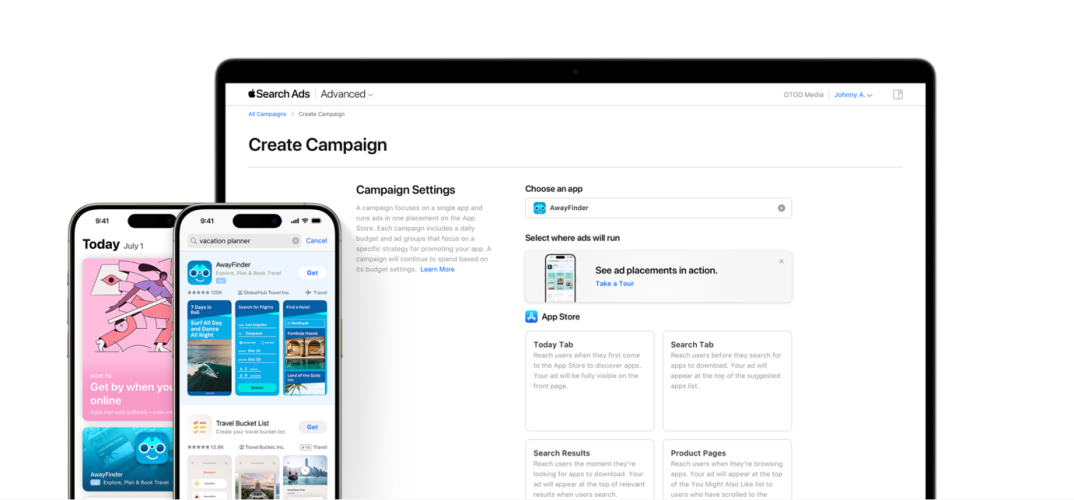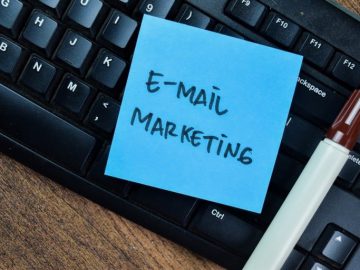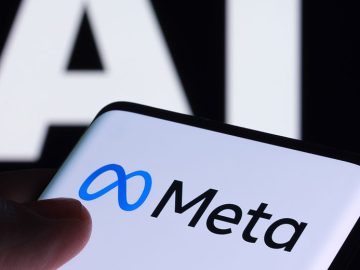Without mastering user acquisition, you are unlikely to get far in today’s highly competitive app marketing landscape.
In case you aren’t aware, user acquisition is the process of attracting and converting potential users into active users or subscribers for your app, typically through a combination of marketing strategies and channels.
In this case, through a combination of paid and organic acquisition techniques.
While both paid and organic acquisition techniques have their unique advantages, the real power lies in strategically combining the two.
By blending the immediate results of paid campaigns with the long-term value of organic efforts, businesses can create a high-yielding user acquisition strategy that not only attracts but also retains a loyal user base.
Throughout this post, we’ll explore the differences between paid and organic acquisition, illustrate how to integrate these strategies effectively and delve into the costs and synergies between them.
What sets organic and paid user acquisition apart?
Let’s begin first by defining organic and paid user acquisition.
Paid user acquisition refers to the techniques used when advertising your app on different channels to drive relevant traffic to an app store and convert new users. Examples include:
- Paid Social Media Ads: Companies pay to run their ads on social media platforms like Facebook, Instagram, or TikTok.
Paid social ads allow you to target your audience based on demographics, interests, and behaviours.
Additionally, they provide detailed analytics and insights, allowing you to optimise your approach and retarget your audience more effectively.
- Search Ads: These include Google and Apple Search Ads.
Google App Campaigns allow you to promote your app across Google’s vast network. They have a broad reach and are highly automated and algorithmic.
Apple Search Ads are keyword-based and focused on reaching users searching for apps within the Apple App Store.
These ads use a cost-per-tap (CPT) pricing strategy and offer a direct app-install option.
Using Search Ads targets users typically looking for specific solutions, making them more likely to install your app.
To get the best results from this channel, conducting thorough keyword research, writing effective ad copy, and consistently optimising your bids and targeting is important.
In-App Advertising (DSP’s) In-app advertising involves displaying ads within other mobile applications. This method leverages various ad formats, such as interstitials, banners, and rewarded videos, to engage users.
In-app advertising is often performed through demand-side platforms (DSP’s).
A DSP is a software system that allows brands, agencies, and app developers to manage multiple ad and data exchange accounts through a single interface.
With a DSP advertising solution, advertisers can bid on various ad formats and optimise performance based on key performance indicators (KPIs) like effective Cost Per Clicks (eCPC) and effective Cost Per Miles (eCPM).
Some of the DSP’s available are Zoomd, Astrad and Revx.
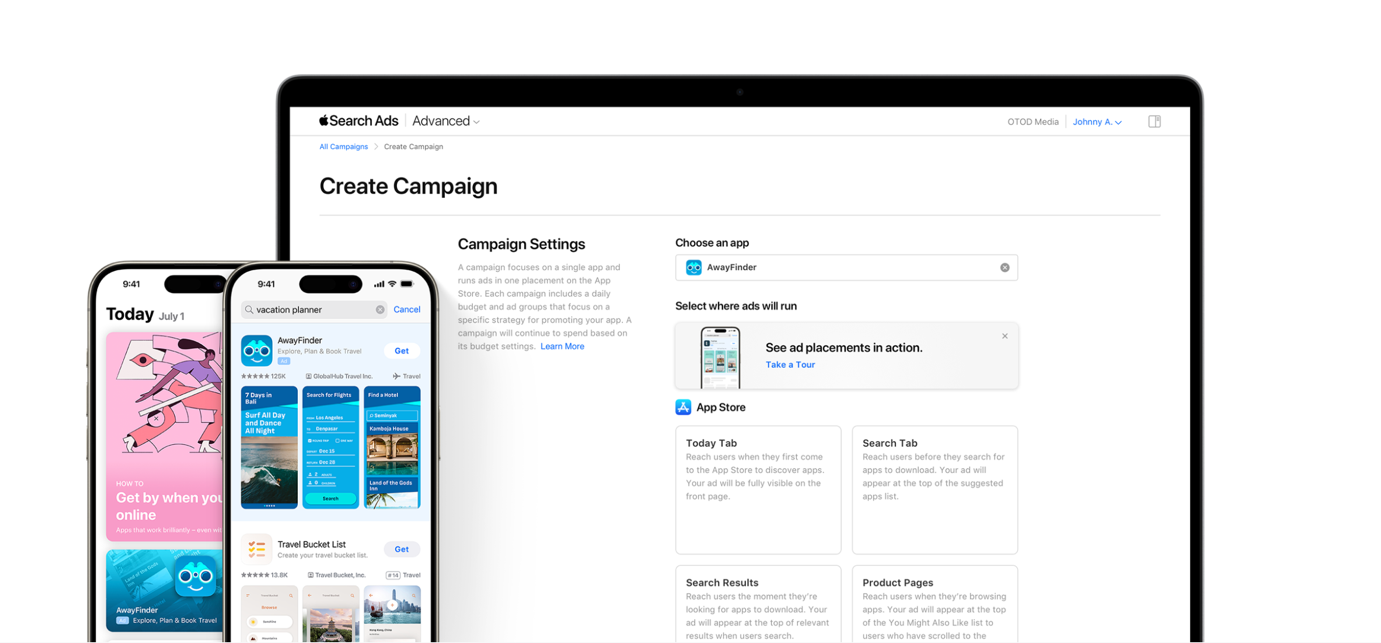
Source: Apple Search Ads
Now let’s define organic acquisition.
Organic user acquisition involves acquiring new users through non-paid channels, to create a loyal user base.
Examples of organic acquisition channels include:
- Social Media: Social media platforms offer valuable opportunities to promote your app and generate organic traffic.
Engaging content tailored to your target audience can establish a genuine rapport and increase the likelihood of users trying out your app.
Collaborating with influencers can further amplify your reach and attract a highly targeted organic audience.
- App Store Optimization (ASO): ASO involves optimising your app’s listing in app stores to enhance visibility and attract organic downloads.
By incorporating relevant keywords in your app’s title, description and tags, you can significantly improve its discoverability.
Additionally, eye-catching app icons and visually appealing images further entice potential users to explore your app.
- Email Marketing: Effective email marketing can be a powerful source of organic user acquisition.
You can expand your email list with users genuinely interested in your niche by providing valuable content and encouraging sign-ups.
- User-Generated Content (UGC): Encourage existing users and followers to create content related to your app and share their positive experiences with it.
User-generated content can significantly influence potential users and establish your brand as an authority in your field.
- Word of Mouth: One of the most potent forms of organic user acquisition is word-of-mouth marketing, (referrals), often initiated by satisfied users.
Delivering exceptional products or services and outstanding customer experiences can turn your users into advocates who spread the word about your app.
Organic vs. Paid Acquisition: Which one is best for you?
A benefit of using organic user acquisition strategies is that they offer cost efficiency and long-term sustainability. A drawback of organic strategies is that they can be time-consuming to carry out and slow to yield results.
Paid user acquisition, on the other hand, can quickly attract a large number of users, offering immediate visibility and measurable outcomes. However, it can also be expensive and require ongoing investment to maintain user growth.
The best results come from a balanced approach. Each strategy has its strengths and when used well together, they can complement each other to maximise reach, engagement and user acquisition efficiency.
How to Blend Organic and Paid User Acquisition Tactics
When approaching your combined strategy, consider the strengths of organic and paid user acquisition methods and the ways one strategy can contribute to the other.
For example, leveraging paid user acquisition to generate brand awareness and increase visibility for your app leads to higher downloads and engagement compared to relying solely on organic methods.
The quality of leads acquired through paid ads may not always match those acquired organically. However, your newfound audience from paid ads provides a valuable sample for organic retargeting campaigns.
Using organic channels such as email marketing and social media, you could target users who engaged with your paid ads but didn’t download your app.
17.5% of apps running retargeting campaigns see a 25% conversion rate. This is impressive compared with the average App Store Impression to Install Conversion rate of 3.6%. This strategy can boost conversion rates, and it is likely to attract quality users.
Another way to grow your app with a combined acquisition strategy is to use the data you gathered. You can use the insights and data from your paid campaigns to optimise your organic strategies, making them more effective and targeted.
By tailoring your organic acquisition efforts to user preferences and behaviours based on paid campaign data, you can improve your app’s performance and achieve better results.
Again, utilising the app users acquired from your paid user acquisition efforts can significantly enhance your app’s credibility.
Positive reviews from these users can make your app more appealing to those who discover it organically, potentially boosting organic downloads.
Positive comments and feedback also can boost your app’s ranking in app stores, increasing its chances of being discovered by users searching for relevant apps.
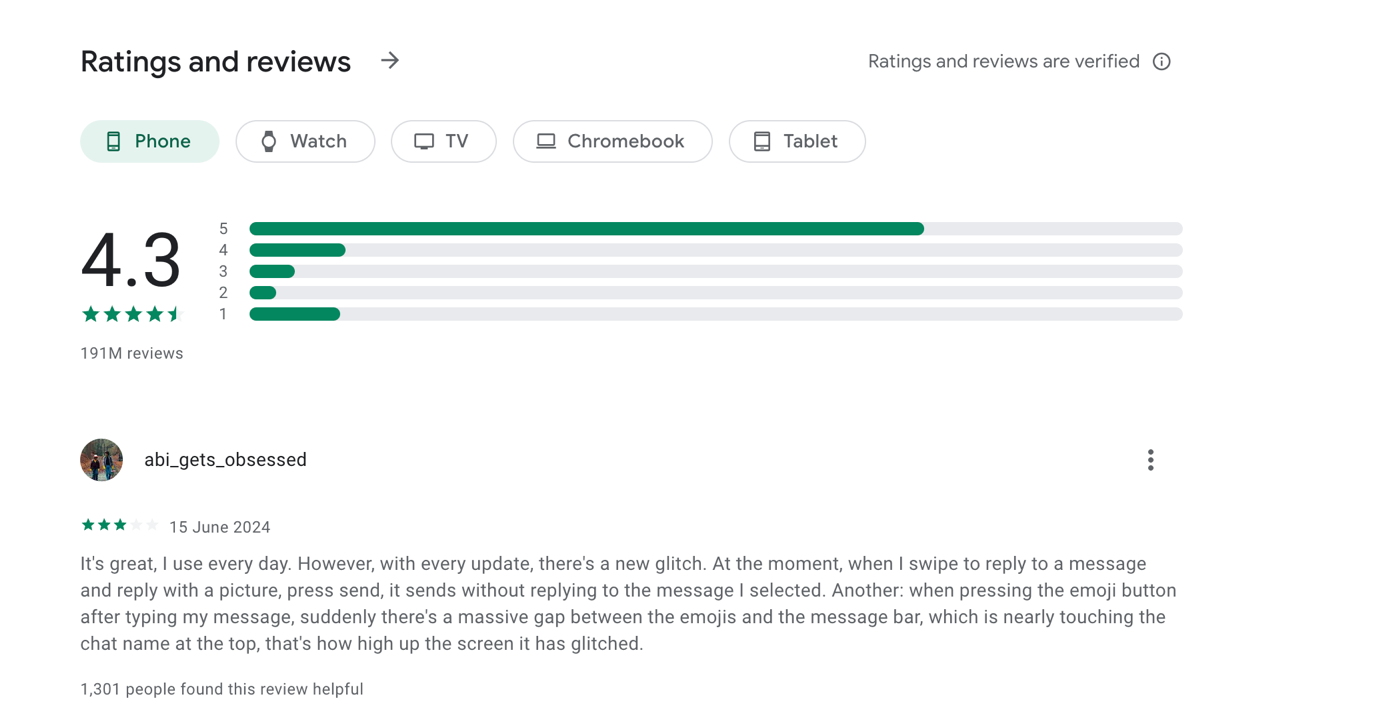
Source: Google Play Store
Evaluating success in organic and paid user acquisition campaigns
Tracking and measuring your organic and paid user acquisition campaigns are essential factors in understanding the overall effectiveness of your acquisition strategies.
There are several key metrics you should consider when determining the success of your campaigns’ performance, such as:
- (CAC) – Customer Acquisition Cost: The total expenses incurred by an app business to attract and convert a new user, including marketing, advertising and other promotional activities.
- CLV – Customer Lifetime Value: The total revenue an app can expect to earn from a user throughout the entire interaction with the app.
- CPA (Cost per Acquisition): the expense an app incurs to acquire a single user, lead, or conversion, typically measured in marketing and advertising campaigns.
- ROI (Return on Investment): A measure of the profitability of an investment, calculated as the ratio of net profit to the initial marketing cost invested in user acquisition and engagement efforts.
CAC is a critical metric to measure as it helps you asses the profitability and efficiency of your efforts. It:
- Shows your marketing ROI
- Determines the effectiveness of your current marketing strategies and channels
- Aids in product or service improvement
- Helps you manage your expenses more efficiently
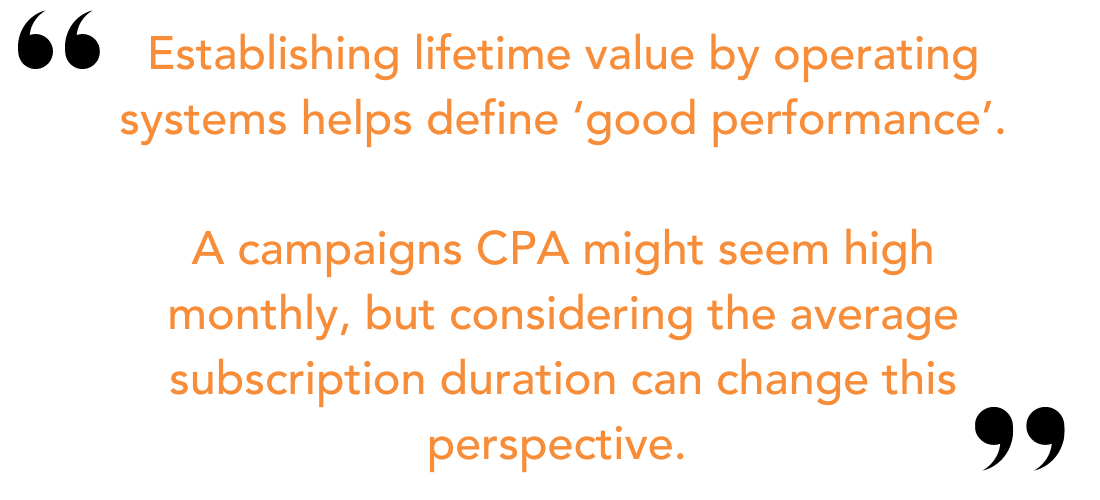
What is the difference between organic and paid user acquisition costs (CAC)?
Organic customer acquisition costs refer to the expenses associated with attracting users through non-paid methods.
These costs are generally lower than paid user acquisition costs and involve indirect expenses related to content creation, optimisation, ASO and other engagement-based activities.
While organic acquisition costs tend to be lower, they are usually harder to measure, especially as organic acquisition methods yield slower and more gradual growth.
This said, organic acquisition strategies often provide sustainable longer-term growth.
To some extent, your organic acquisition costs are out of your hands (but they are influenced by your acquisition strategy!). They require people to find your app naturally or enjoy it so much that they then recommend it to their network.
If your organic acquisition grows, it is a sign that people like what you’re putting out. But if it declines, it can indicate that people aren’t overly impressed with what you’re offering to the market. See how your organic efforts perform and optimise your strategies accordingly.
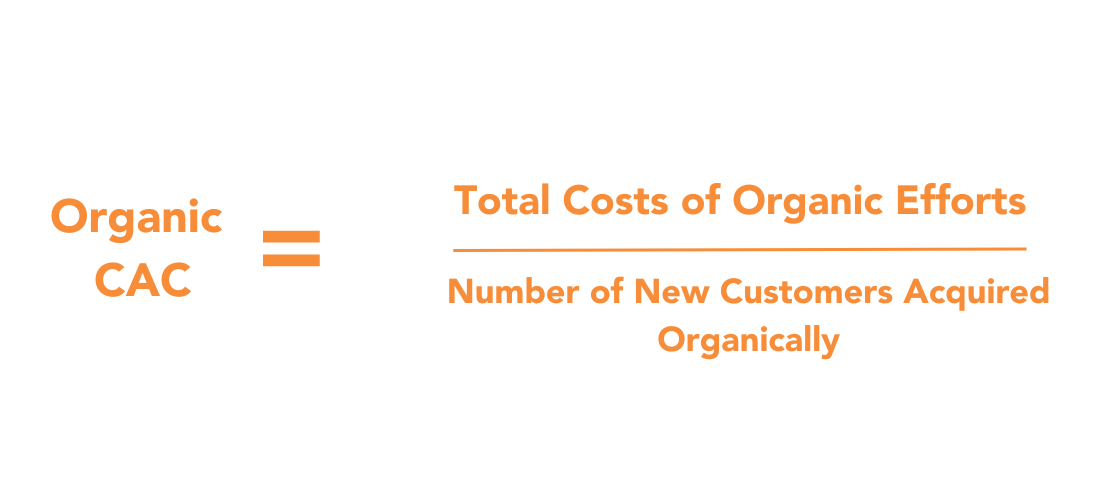
Paid user acquisition costs are associated with paid advertising strategies, such as running ads with platforms like Apple Search Ads or through in-app marketing.
These costs are higher per user but provide immediate and scalable results, often leading to quick user acquisition, but at the expense of potentially lower user engagement and retention.
Users acquired through paid user acquisition strategies tend to be of lower quality than those acquired through organic acquisition strategies.
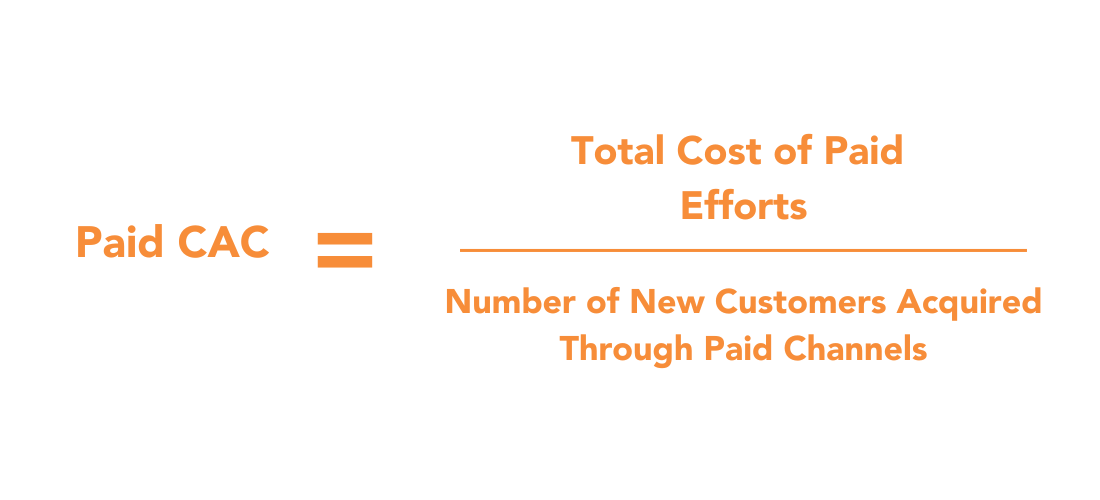
Where costs are concerned, integrating both strategies allows for a more cost-efficient approach.
Paid campaigns can drive quick results and provide immediate data, which can be used to fine-tune organic strategies, ultimately lowering the overall CAC.
In case you wanted to calculate costs for both your organic and paid user acquisition efforts, you would measure your blended customer acquisition costs (Blended CAC).
Blended CAC (is the average cost incurred to acquire a new user across all marketing channels, combining both paid and organic efforts.
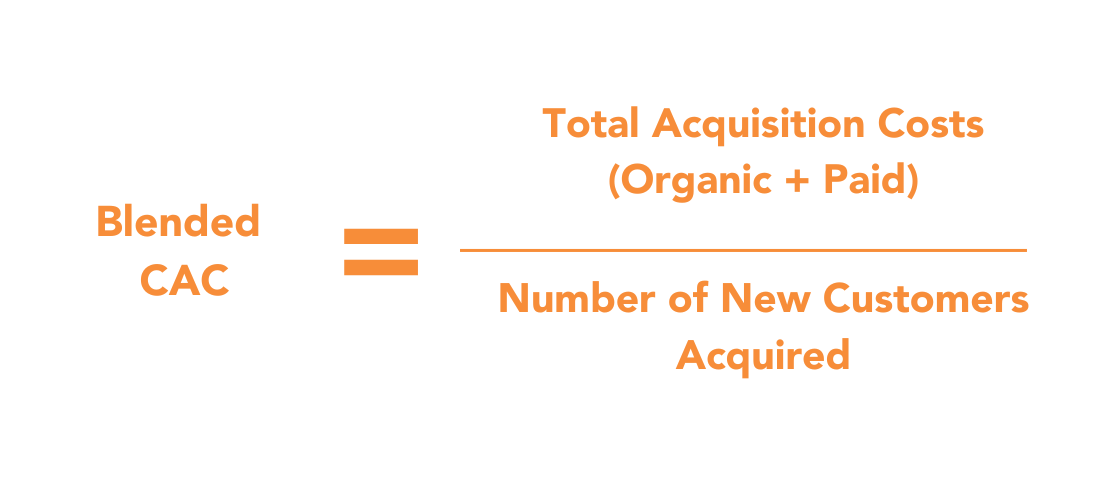
By combining data from both organic and paid user acquisition sources, businesses can gain a more comprehensive understanding of their user base, leading to more informed marketing decisions and more efficient budget use.
Do paid ads increase organic traffic?
The short answer to the question above is – yes. Paid ads can increase organic traffic and here’s how.
- Paid ads can increase brand awareness of your app. For example, Search Ads can increase brand awareness by as much as 80%. This heightened awareness can lead to more organic searches and word-of-mouth referrals.
Users who see your ads may not immediately download your app but they are more likely to remember it and search for it organically later on.
- Paid ads also create traffic towards your app leading to increased downloads within shorter periods. The surge in downloads improves your app ranking in app stores, boosting its visibility and increasing the likelihood of organic downloads.
- An increase in paid downloads boosts app store rankings, enhancing the app’s visibility and attracting more organic traffic.
When an app achieves significant downloads through paid advertising campaigns, its ranking in the app store’s search results and featured sections improves.
This higher ranking increases the app’s exposure to potential users who are browsing or searching for apps, making it more likely to be discovered organically.
As a result, the initial investment in paid downloads not only drives immediate user acquisition but also creates a cycle where increased visibility leads to more organic downloads, further reinforcing the app’s presence in the marketplace.
Over time, the combined acquisition contributions will lead to a more diverse user base.
Paid user acquisition can quickly build a user base, while organic methods nurture long-term engagement and loyalty.
The initial influx of users from paid ads can create a snowball effect, attracting more organic users who are typically more engaged and have a higher customer lifetime value (CLV).
You’ll then find that your paid user acquisition techniques synergistically contribute to your organic acquisition efforts, offering you an effortless holistic strategy.
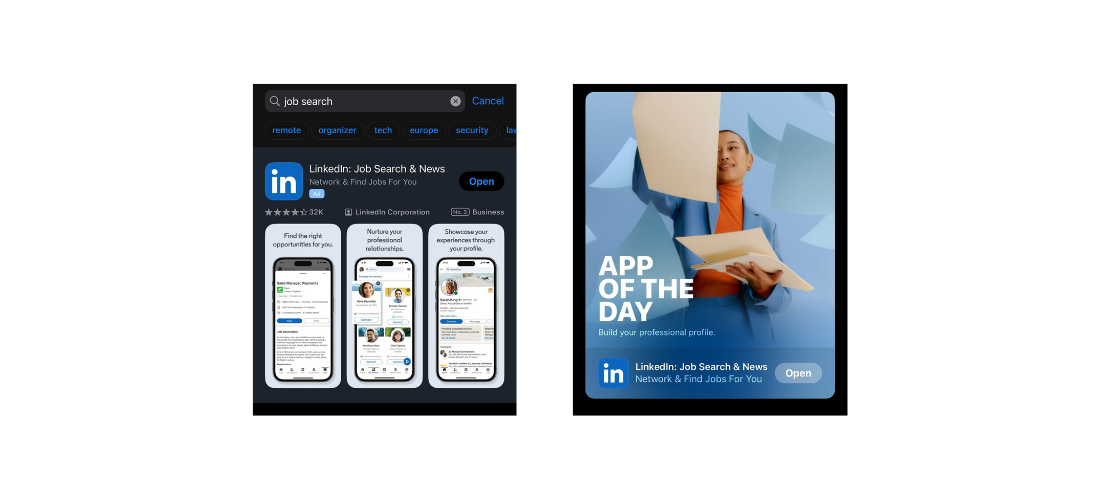
The image above displays a LinkedIn sponsored ad appearing for the term ‘job search’ alongside, LinkedIn appearing as ‘App of the Day’ on the featured page as a result of its high organic search results.
The Bottom Line: Leveraging combined user acquisition tactics
Successfully navigating the complexities of user acquisition requires a nuanced approach that leverages the strengths of both paid and organic strategies.
As we’ve discussed, while paid methods offer quick visibility and measurable results, organic tactics build credibility and foster long-term engagement.
By carefully balancing these approaches, app marketers can maximize ROI, reduce overall acquisition costs, and even boost organic traffic through the strategic use of paid ads.
In the ever-evolving app marketplace, the ability to adapt and combine these techniques will be crucial to outpacing the competition and achieving sustained growth.
Ready to take your app to the next level? Contact our team of experts today for a free consultation and let us help you develop a winning user acquisition strategy.
You can also have a look at our app marketing blog for a range of valuable insights.

